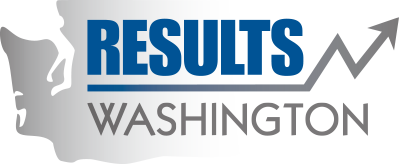Archived: Increase treatment of forested lands for forest health and fire reduction
Forest health treatments reduce crowding and remove weaker trees. This reduces the risk of wildfire damage and increases the remaining trees' ability to resist or recover from drought, wind or ice storms, wildfire and forest insect or pest activity into the future. Investing in forest health treatments protects natural resources, creates important jobs in rural areas, and reduces the costs and risks to public safety from wildfire.
Decades of fire suppression, past forest management practices, and lack of recent management action have created overcrowded, fir-dominated, vulnerable forests with many dead and diseased trees that are at risk of severe wildfire and insect and disease problems. A warming climate is likely to increase these risks, particularly in eastern Washington, in coming decades. Millions of acres are currently at risk and the associated problems (severe wildfires, insect and disease activity) have been increasing too.
Although many forest landowners recognize these problems, it can be difficult to restore forest health and wildfire resistance because, in general, the trees that need to be removed are small or damaged and there are few products or markets that will buy this material and help pay the treatment costs. The costs to accomplish this work far exceed the available funding.
DNR has recognized the need to increase forest health treatments. From 2004-2007, Washington’s forest health law was updated and DNR’s authorities and capacity to provide forest health services and assistance were increased. Initially, the Forest Improvement Treatment “FIT” authority, a special method to sell low value timber products to accomplish work and improve forest health on State Trust forest land was implemented. The FIT strategy enables state land managers to restore forest health on low value or previously damaged areas. The results of several recent years using that program in eastern Washington are shown in the above chart. These accomplishments are below the target of 10,000 acres of treatment per year (DNR FIT Strategic Plan, 2008) but reflect the expense and challenge of accomplishing this work, especially through the recent national economic crisis.
Additionally, in 2012, with the assistance of the Forest Health Technical Advisory Committee and using his authority to be an advocate for forest health on all lands in Washington, the Commissioner of Public Lands Peter Goldmark declared two Forest Health Hazard Warning Areas to be high priorities for forest health treatments. Because of those declarations, special effort (mailings, educational workshops) has been made to alert and train landowners about forest health conditions and options and to acquire additional funding for management activities. In the 2013-15 biennium, $4 million was acquired to increase forest health treatments on state and private forest land in eastern Washington, primarily in those Warning Areas.
A report of many types of forest health improvement treatments that the DNR is engaged in on state and private forest land is being developed and will be submitted to the Legislature in October, 2014. It will also include a comprehensive evaluation of the magnitude, locations, and treatment needs of eastern Washington’s forests and will attempt to identify and prioritize future work.
Every forest landowner is encouraged to maintain their forest lands in a healthy condition in order to meet their individual ownership objectives, protect public resources, and avoid contributing to forest insect or disease outbreaks or increasing the risk of uncharacteristically severe fire.
People who want to view recent annual forest health reports, learn more about basic concepts of forest health and see the Forest Health Hazard Warning Areas can go to the Department of Natural Resource website ( http://www.dnr.wa.gov)
Landowners who want to learn methods to steward their land for a productive, sustainable future can use the resources of the DNR’s Small Forest Landowner Office which includes background and links to contact information for the DNR’s Forest Stewardship program @ http://www.dnr.wa.gov/sflo
